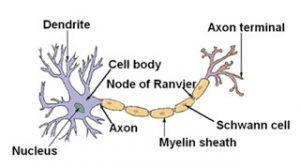Question 1 Define the term stimuli?
Question 2 Define the term coordination?
Question 3 What are neurons?
Question 4 Explain the structure of neuron?
Question 5 What is the function of nervous system?
Question 6 What is synapses?
Control and coordination
The change in environment to which organism respond and react is called stimuli.
The environmental factors such as heat, light, cold, touch, taste, smell, force of gravity etc. act as a stimuli to induce response and reaction in living organism.
The working together of different organs of a body of an organism in a proper manner to produce proper reaction to a stimulus is called coordination.
For proper control and coordination there are 2 systems:
1) Nervous System
2) Endocrine system
Nervous System
The nervous system is composed of specialised cells called neurons which exercise control by sending electrical signals called nerve impulses.
Nerve cell or neurons are the structural and functional unit of nervous system.
Structure of Neuron
1) Cell Body : The cell body is also called as cyton. It has abundant cytoplasm called neuroplasm and spherical nucleus, mitochondria, neurotubules, neurofibrils.
2) Dendrites : There are several short branches stretching out from cell body. They conduct nerve impulses towards cell body.
3) Axon : It is a single, very long cylindrical fibre arising from cell body. They conduct nerve impulses away from cell body. They have an insulating and protective sheath of myelin around it.
The neurons lie end-to-end in chains to transmit nerve impulses. Each neuron receives an impulse through its dendrites and passes it on the next neuron in the chain through axon via cell body.
There occurs a very minute gap between terminal portion of axon of one neuron and dendrite of other neuron. This gap is called synapse. The synapse act as a one-way valve to conduct impulse in one direction only. This is because a chemical substance called neurotransmitter is secreted only on one side of gap ie axon’s side.

Leave a Reply